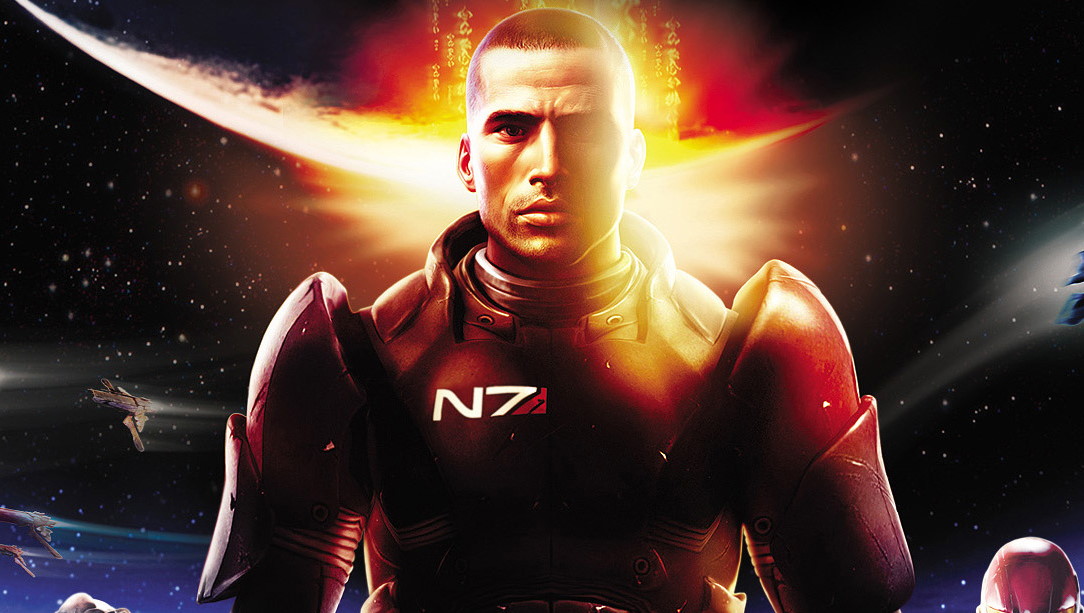What makes an Obsidian game? Playing tonnes of old Obsidian (and BioWare) games
In an exclusive interview with PC Gamer, Feargus Urquhart says keeping a studio's spirit alive means everyone doing their homework.

Obsidian Entertainment was founded in 2003 by several employees of the soon-to-be-shuttered Black Isles Studios (best-known for Fallout 1 & 2 and Planescape: Torment). Obsidian's early years were spent working on sequels to other company's games, often with spectacular results like Knights of the Old Republic 2: The Sith Lords and Neverwinter Nights 2, before it moved onto original titles like Alpha Protocol, Pillars of Eternity, and the very successful Outer Worlds.
Ask any fan of the studio's work and they'll tell you there's a common thread between these games, a hard-to-grasp quality that makes it feel like an Obsidian joint: Some just put it down to the consistently excellent writing, of course, but it's much more than that. Following the announcement of the studio's next project, the excellent-looking Avowed, we sat down with Obsidian co-founder Feargus Urquhart to talk turkey and, towards the end of the chat, thoughts turned to what he made of this thread. After all, Obsidian's been around for 20 years now, it's a big studio, talent comes and goes, and you have the game development equivalent of the Ship of Theseus problem: What makes an Obsidian game an Obsidian game?
"I just bluntly say it's hard," said Urquhart. "I've been doing this now for 32 years. It's crazy, and so we're more than one generation from developers that are starting today. We're more generations, you know, and I have people that work here that were not born when I started."
One part of the process is making everyone do their homework. "When we're starting up a product we basically say, all right, go play all these games, and even play our own games," said Urquhart. "It sounds silly, like why should we have our people play our own games? But it's important, and so we do. And while Avowed is not a Pillars [of Eternity] game, one of the things that everybody had to do is go play Pillars 1 and 2, to get a sense for the world. So even though the RPG system is different, [Avowed's] not gonna be a turn-based six-player party RPG, it immerses people and then they get the sense for the expectations for companions and conversations and things like that."
Urquhart also points out that, while Obsidian obviously has turnover, it has managed to retain certain talent for a very long time, which creates its own consistency across different titles.
"We also have a consistency of the art, there's a consistent group of people that have worked here for a very long time," said Urquhart. "There are two people I talk about all the time that wish I would never mention their names—but Dan Spitz Lee and Scott Everts—I worked with all the way back to Black Isle when I started in 1996. And Dan has been a programmer on Fallout and Fallout 2 and Planescape: Torment and Stick of Truth and KoTOR, and is now lead gameplay programmer on Avowed. Then you have Scott Everts who laid out every single level in the original Fallout and is an environment artist/world builder on Outer Worlds 2, and did the same thing on Outer Worlds 1. And we have a core of people who do remember, maybe not as well as we used to, but do remember."
Urquhart goes on to make the point that while the studio uses third-party tools (Avowed will be built using Unreal Engine 5) it also has its own tools for creating key elements of the experience, like dialogue. He calls the dialogue tools a "cord" that "help people understand what we try to accomplish and [the tools are] specifically focused on being an RPG studio. It's still hard, because also every game should not mimic the last game. And so what are the things you should change? Lots of conversations, and mistakes, and weirdly [laughs] playing your own games."
The biggest gaming news, reviews and hardware deals
Keep up to date with the most important stories and the best deals, as picked by the PC Gamer team.
Which leads to a rather obvious question. As well as the Obsidian classics that Obsidian developers have to become familiar with, what are the other touchstones for one of the greatest RPG studios in the world?
"For Avowed, weirdly, it is go play BioWare games," said Urquhart, "go play Dragon Age, play Mass Effect, play Bethesda games, play Skyrim, go play the original Pillars games. This is more a first person game so Dying Light was one of the example games, just to kind of get a sense for running around the world in first person. I'm sure there were some others, but we asked people to play five or six games, and not just two hours of them, but quite a bit of them."
Urquhart ends on something of a tangent, but it's a hugely illuminating one. The difference is in looking at these things from the perspective of a designer rather than that of a player simply there to have a good time, and how Obsidian might get granular about what works and what doesn't.
"We did a thing within the last six months where we had someone just run between major points of interest in every Bethesda game, Dragon Age and all that kind of stuff," said Urquhart. "Just to see the length of time that it actually takes for someone to run from this town to that cave or village. To understand, and in our games to understand, what are these lengths of time and make sure we weren't forgetting what worked and asking why it worked and what didn't work.
"I guess it is just kind of looking at what we do as a craft, and not being our own echo chamber. There's a lot of examples out there, not just of our games, but all games to take what we can to make sure that we continue to do what we do well."

Rich is a games journalist with 15 years' experience, beginning his career on Edge magazine before working for a wide range of outlets, including Ars Technica, Eurogamer, GamesRadar+, Gamespot, the Guardian, IGN, the New Statesman, Polygon, and Vice. He was the editor of Kotaku UK, the UK arm of Kotaku, for three years before joining PC Gamer. He is the author of a Brief History of Video Games, a full history of the medium, which the Midwest Book Review described as "[a] must-read for serious minded game historians and curious video game connoisseurs alike."

